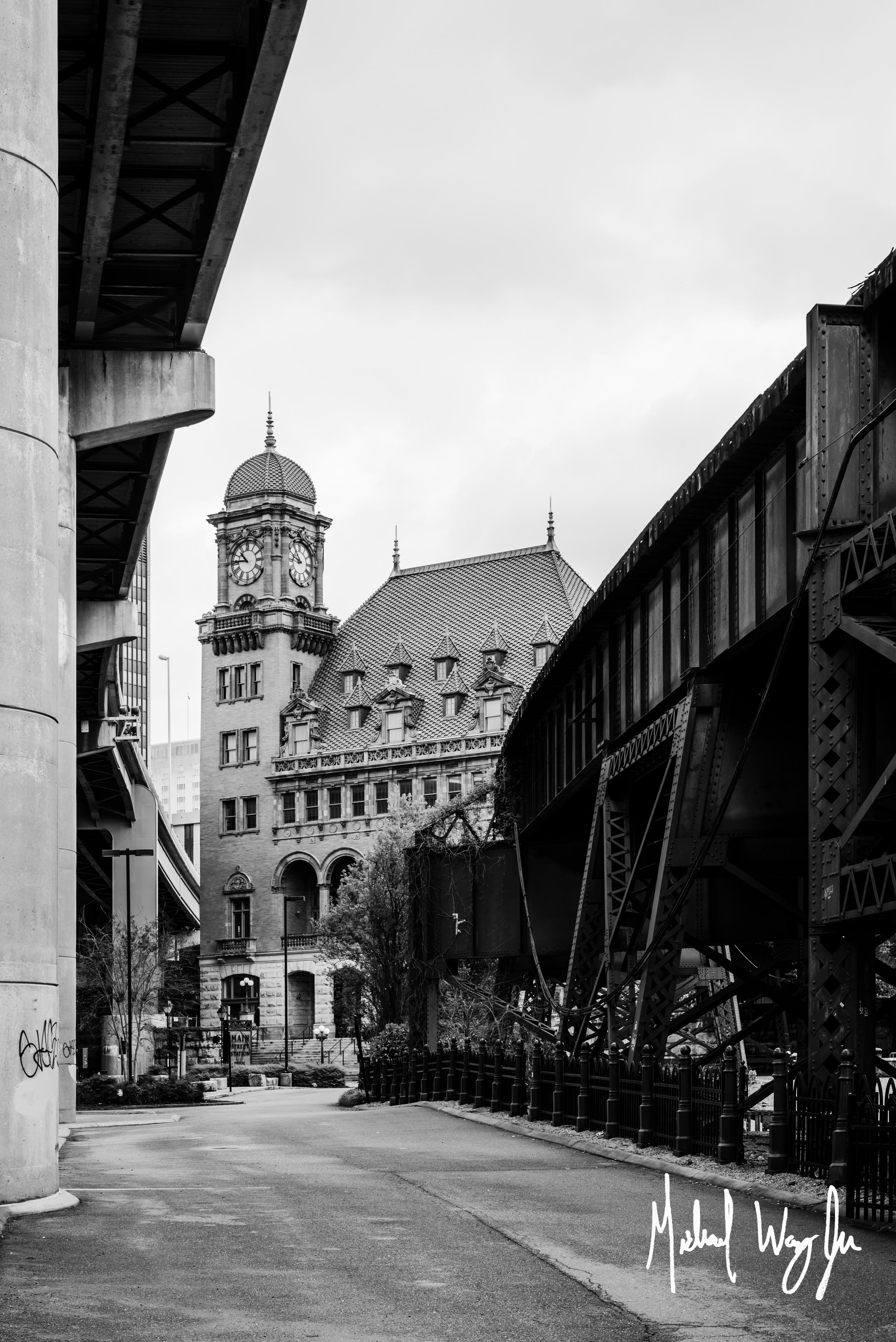Black & White Studies: Richmond's Main Street Station
My dad seemed to almost always have a camera in his hand when I was a kid. He photographed studio headshots for models and aspiring actors before I was born and became the de facto photographer for our church and pretty all family gatherings later. Good luck finding many images of him in the family photo albums because he was almost always the one behind the camera. When I got my first camera and started showing him images for feedback, he used to highlight his favorite images by saying “this one would work in black and white”, which was one of the most meaningful technical compliments he could give.
The way my dad saw it, with modern cameras, pretty much anyone can take a reasonably interesting photo in color, but black and white is one of the most brutal possible training grounds for people who want to think of themselves as serious photographers. Trying to tell a visual story using light as a binary instead of the full color spectrum is one of the most instructive experiences for a photographer. Working with the binary of light and varying degrees of shadow forces one to really see light and conscientiously think about how best to put light and shadow to work to tell the best possible story. If you’re lucky, you’ll find pockets of light, shafts of light, and rays of light with which to inject cinematic drama into your work. But even if such elements are unavailable, one can still use shading and the positioning of lighter and darker elements within a composition to frame and celebrate the subject of an image or scene in interesting ways.
I took a quiet post-brunch photo safari last Sunday morning to explore Richmond’s Main Street Station and the surrounding cityscape, composing each image specifically for usage as a black & white photo. Was quite the mental workout, but a useful and fun exercise just the same. Thanks, Dad. We’ve gotta get you in more of the family photos.

























